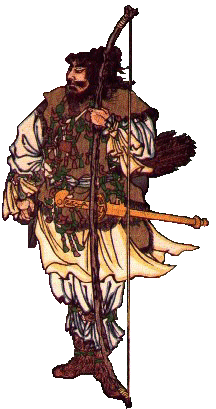Round Rock Martial Arts sponsored Henry Kono came to Austin this weekend, and the Aiki tribes gathered for a pow wow. Seminars are interesting weekends. I do enjoy getting to meet and discuss with others. It sometimes is hard for me to play like others like to play, but such is the game.

My weekend began by showing up early Friday night to the Round Rock facility. I found Matl Sensei, 9th dan in Judo, standing alone. No one showed up for his Friday class, so I had the master to myself for 15 minutes. I showed him all my new entries to outside throws, and he then showed me the errors of my approach. He was correct in his analysis and saved me a lot of time by correcting my ideas. As I was getting ready to go to the aikido seminar downstairs I pulled out my hakama leggings from my bag. Matl Sensei came over and pointed to it. "Do you know why aikido men wears these?" He had a devilish smile and he said "To cover their bad footwork."

The seminar started downstairs. Henry Kono is an interesting quirky personality, like all aikido teachers I have had the pleasure of meeting. He is an old master In his 80s. He is among the last of the physically able aikidoka to meet and train with Ueshiba Sensei. He plays this up in his lectures. He often refers to to Ueshiba and his four years training at Hombu in Japan during his lectures. He is a small man with a heavy cigarette smell. Like all old men, wild hairs fire in random directions from his eyebrows and ears. He tends to say the word "right, right" about twice a sentence. One of the guys at the seminar was wearing a Yoda t-shirt, and I thought that that was a pretty accurate depiction of the experience of training with this teacher.

He promotes a shared center of balance approach to aikido. While his approach is not unique, I do only see top level guys lecture about it and actually do it. He has a very light touch and his stuff definitely works nice and sweet. He laid hands on me some 10 times over the weekend and he moved me around effectively each time. I have seen Chuck Clark and Karl Geis move similarly. I also felt the concepts he was trying to get out mirrored Nick Lowry's hazumi seminar he gave us last year.

This is how he says most people do martial arts. Two unconnected centers trying to affect each other.

This is the model he recommends using. The centers and motion unites into a common shared center.
Another lesson I saw mirrored in some of the other high level teachers that I follow is the emphasis on continually moving feet and center. Through out the techniques motion never stops.

With no real fault of Kono Sensei my one gripe about aikido seminars in general is this: although the teacher could apply the principles, almost none of the students there could genuinely reproduce the effect. Instead during the practice sessions people danced around and fell over for each other pretending to do what the teacher taught. No one there, including myself, really caught the mechanics of what was going on. The one time I hesitated to fall for a second, I was scolded by a fellow student for being uncooperative. I informed him that his timing was a hair off, he informed me that no, indeed the problem was mine.
So my constructive criticism to this seminar and seminar in general would be to slow down, work more drills of the mechanics that are supposed to be represented. I personally think the attitude amongst aikido guys that uke falls every time is a flawed paradigm, and it keeps people from actually getting the chance to learn the material. There were a few instances that I totally brain farted, yet uke still took a nice polite roll. This is why we are such a criticized art form guys!
Another thing to note about the seminar is that I was set to film the teachings. But it quickly became clear to me that he teaches the same seminar as it is seen on the You Tube series. I heard the same stories, phrases and demos. I decided not to film, because it had already been done. That being said, you probably have to listen to the same thing a bunch of times before it will sink in due to it's complexity. I found that he was a little harder to follow now days, then his seminar ten years ago too. His voice seems quieter and he often would start talking about something without referencing the subject.
So here is part one of the gist of the seminar...

Austin is becoming an interesting aikido scene. Before a few years ago, the groups were very insulated from each other. But under the organization of Elizabeth Tillman, Austin is finally slowly coming together. Many Austin dojos were represented this weekend: Round Rock, KyuRyu AikiBudo, Aikido of Austin, Still Point, and U.T. Aikido all had representatives. Local area schools from Leander and Killeen also made the drive. Many folks flew in from around the country as well.
I finally got to have some sessions with other local instructors. Brent from the UT Seidokan group was a nice guy and fun to work with. I have met him many times, but we have never traded throws till now. James Goeman from Aikido of Austin was another instructor I finally got to spend some quality training time with. I really am pleased to see all these folks coming together.

Really I find the relationships that form from budo to be the most satisfying part of practice. My favorite part of the seminar was after everyone left and Hussey Sensei, Joseph Bennett of Standing Tree Kempo, and I sat around discussing the events and ideas of the day.
















